The ability to understand electrical wiring is an essential skill for any home craftsman. To repair and replace wiring, fix household electrical appliances, install sockets and switches, it is necessary to determine the phase and zero. You can find the phase and neutral wire in a single-phase or three-phase network in different ways - visually, using special tools. The choice of method depends on the conductor itself and the testing conditions.
Definition by color coding
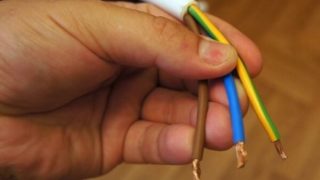
The easiest way to find the right conductor is to identify it by the color of the insulation. The color of the wires in the wiring and its designation are regulated by state standards. According to the international IEC standard, manufacturers are required to paint the insulation of each core in its own color. In a single-phase network, the color of the wires in the 220 V wiring is as follows: zero should be blue or blue, the ground should be yellow-green (sometimes in the form of a strip), the phase can have any other shade. Typically brown is used for the phase conductor. In a two-core wire, zero is blue, the phase is of a different color. What color a phase is in a multiphase network depends on the manufacturer. Usually it is black, brown, red.
This determination method is not reliable. Not all manufacturers adhere to the established requirements, therefore, the veins can be labeled in different ways. It is especially dangerous to use color-coded search in old buildings - all the veins there were white.
Using an indicator screwdriver
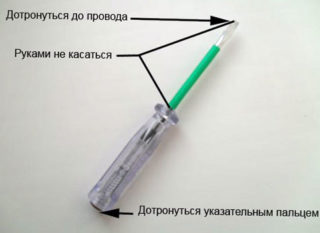
This is one of the most common household phase searches. An indicator screwdriver can be bought at any hardware or electrical store for little money. It is a classic flat-shaped screwdriver with an indicator on the handle. The body is made of dielectric for the safe work of the master.
The tip of the indicator screwdriver is a contact tip. It is not recommended to use such a device in complex repair work. This will shorten the service life of the product, making it impossible to detect the phase conductor.
To find the phase, you need to touch the stripped conductor with the sting of the indicator. Then you need to touch the contact pad with your finger. If the light on the screwdriver comes on, the sting has touched the phase. Otherwise - zero or ground. If both conductors show phase, a serious malfunction can be judged.
The described algorithm is suitable for the simplest screwdrivers. You can find improved products on the market that allow ringing the circuit and performing other operations. Outwardly, they look like ordinary indicator screwdrivers, but instead of a neon light, an LED is used. The method of determination in this case will vary slightly. The technician does not need to touch the contact pad - just attach a screwdriver to the core.
Determination with a multimeter
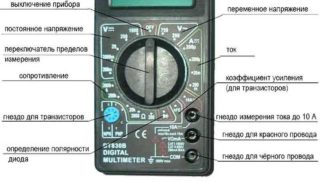
Any home electrician should have a multimeter in their toolbox. It is a universal tester that allows you to check the performance of electronic components, measure voltage and current, and ring circuits.An inexpensive and high-quality device with the simplest functionality can be bought for 300-500 rubles. Professional electricians use more expensive devices with additional options and minimal error.
Multimeters are of two types according to the way they work - electronic and analog. Pointer or analog - this is a simple device with an arrow. The digital multitester displays the values in numbers. The detection method is the same for both types of devices.
Rules for working with a multimeter:
- Do not measure at high humidity.
- Defective probes are not used.
- The measuring limit must exceed the measured value.
- When measuring, it is forbidden to twist the knobs or set other limits.
Currently, it is digital multimeters that are actively used. The verification algorithm may differ.
Unmarked three-wire wiring
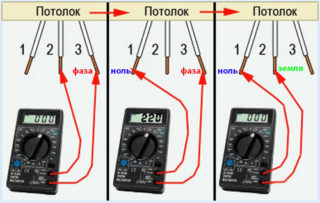
You can choose an exclusion method. To find the phase, the multimeter should be assembled and put the probes on the left and right - black in the COM connector, red - in the voltage measurement connector. The switch should be placed in the alternating voltage V ~ or ACV sector. The arrow selects the voltage limit - it must exceed the mains voltage. On the tester, you can see the values of 500, 600, 750 W, depending on the model.
Then the voltage is measured between the stripped conductors. You can get 3 options:
- Between zero and phase there should be a voltage close to the mains 220 V.
- There can also be 220 V between phase and ground. In case of line protection by the RCD system, the machine may trip. If there is no RCD or there is a minimum leakage current, the voltage displayed will be within the rated error.
- There is zero voltage between zero and ground.
After measurements are taken, the tester turns off, the ends of the conductor are insulated and marked. It can be done using colored tape or plaster with appropriate inscriptions.
Checking the contact in the outlet by direct voltage measurement
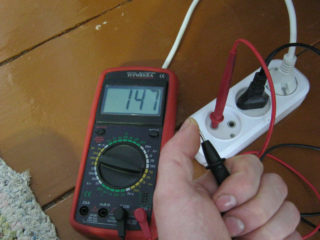
The multimeter is being prepared, a control measurement of the voltage in the outlet is made. This allows you to make sure that there are no breaks in the line and that the device itself is working. If the numbers shown on the display are correct, the connection is correct.
The red probe should touch the tested conductor. In the case of checking the outlet, the probe is inserted into the socket. If you are checking the stripped end of the cable, it is recommended to connect via a crocodile clip. The second probe touches the fingers of the hand. The readings are measured on the display. If the black probe is set to zero, the voltage will be zero or close to zero. When hitting a phase, the voltage will reach tens or hundreds of volts.
It is safe to touch the probe with your hand in this measurement. The device was previously tested for serviceability, so a person will not be affected by an electric shock that is life-threatening. But even despite the safety of the procedure, not everyone can cross the psychological barrier. Then you can touch the plaster, ceiling or wallpaper with the probe. They have little moisture, so the readings on the tester will be visible. They will be below the required value, but it is realistic to determine the phase in this way. Also, as the second contact, you can use any grounded device (heating radiator, water supply) or a metal frame without grounding.
Finding zero and earth
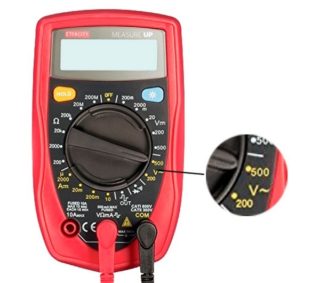
Phase determination is straightforward. It is more difficult to distinguish zero from ground. There are different methods of determination, but all of them are not reliable. You can accurately identify the purpose of the vein using professional devices from the arsenal of specialists.
One way is to check with a multimeter. If an RCD is triggered, it can be judged that the tester was connected between phase and ground. On contact with the phase and neutral conductor, the protective device does not work.This is due to the fact that when measuring between the phase and grounding conductors, a small leakage current is formed, which may not be enough to trigger the protective system.
The second way is to dial with a multitester. The multimeter enters the resistance measurement state. The range can be supplied up to 200 ohms. It is imperative to turn off the voltage on the shield. After that, you should check the voltage between the conductors and the grounded object. The resistance value on the grounding conductor must be lower than on zero.
The described methods are approximate and do not give a 100% guarantee of the correctness of the determination of zero and ground. The connections may vary and the difference in measurement is minimal in all cases. If necessary, use special detection devices.
Grounding bar in the junction box
It is better not to use this method, as its effectiveness and safety are not at the proper level. The reliability of the results depends on the way the electrical wiring is laid, as well as the switching in the switchboard.
Disconnect the ground bus from the supply loop or remove the wire to be checked from it. After that, the conductors are ringed. As a result, zero and ground are revealed.
Prohibited and dangerous methods
The accuracy of determining the conductor directly affects the safety of using household devices. Therefore, the phase search method must be reliable. There are folk ways to determine the phase conductor that are prohibited from using. These include creating a homemade incandescent lamp system. Risk of electric shock while working.
Some people look for a phase in a three-wire and two-wire wire using potatoes. It is also a method that is not reliable and unsafe. It will not work to find out exactly the purpose of the lived with it.
It is possible to determine the purpose of the conductors only with the help of special devices. Visual search or the use of folk methods can lead to negative consequences for the safety of the home, health and human life.









Two electricians are sitting on a pole. Granny passes by.
- Grandma, give me a wire lying on the ground.
Granny picked it up and served.
- You see, "earth"! And you are "phase, phase" ...